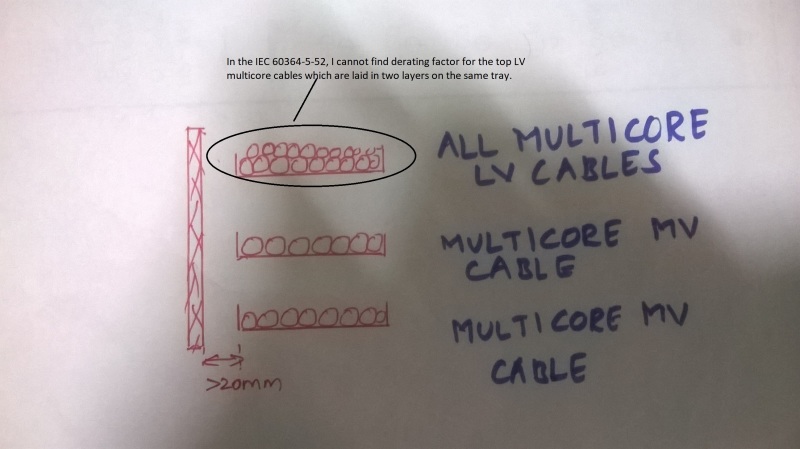NickParker
Electrical
In the IEC std. 60364-5-52 tables, I could not find the derating factor for Low voltage Multicore cables which are laid in several layers on the same tray. How the derating factor for this case is arrived at?


Follow along with the video below to see how to install our site as a web app on your home screen.
Note: This feature may not be available in some browsers.

[b said:NickParker[/b]]I could not find the derating factor for Low voltage Multicore cables which are laid in several layers on the same tray.

